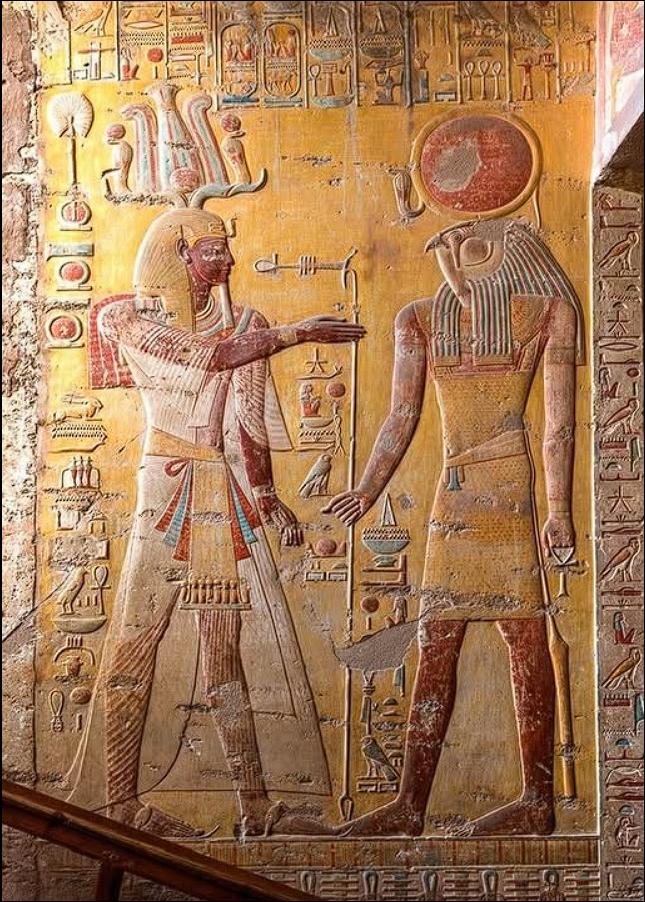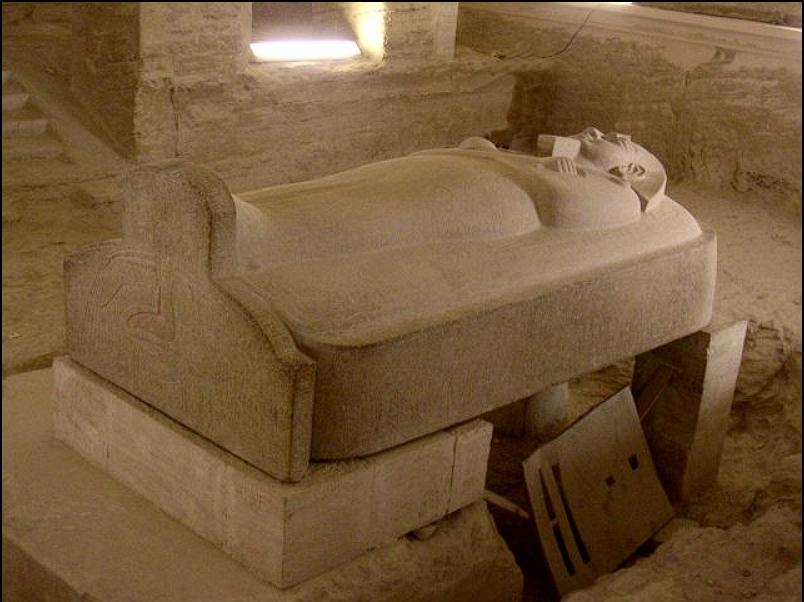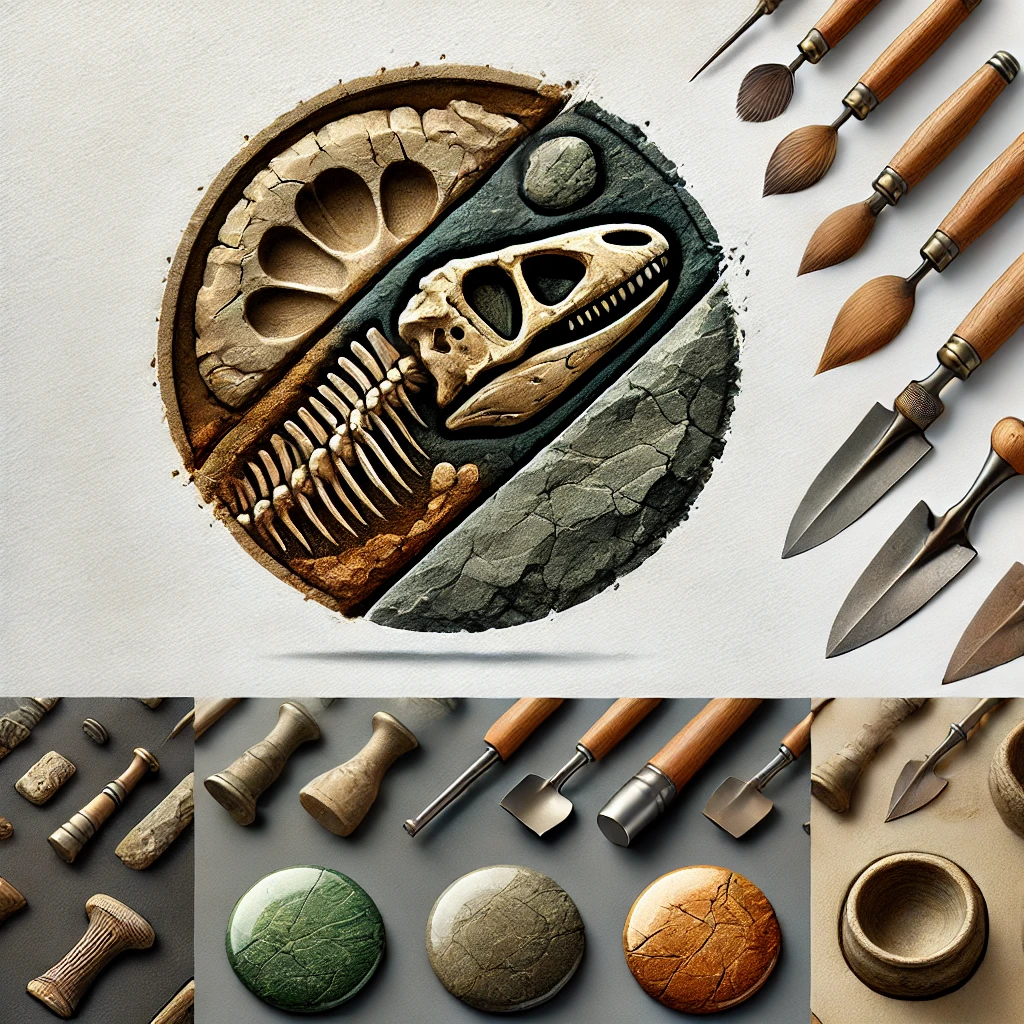Deep within the hallowed chambers of Pharaoh Merneptah’s tomb (KV8) in the Valley of the Kings, a captivating scene unfolds, revealing the profound spiritual beliefs of ancient Egypt’s New Kingdom. This remarkable relief depicts Pharaoh Merneptah standing before the radiant sun god Ra-Horakhty, a powerful fusion of cosmic and royal authority. This scene is more than art; it’s a vital component of Merneptah’s journey to the afterlife, ensuring his divine acceptance and eternal existence.
The Divine Encounter: Merneptah and Ra-Horakhty in KV8
- A Sacred Scene: Kingship and Divinity:
- The relief in Merneptah’s tomb encapsulates the core spiritual beliefs of the New Kingdom, where the pharaoh’s divine connection was paramount. The interaction between Merneptah and Ra-Horakhty symbolizes the essential link between kingship and divinity.
- Ra-Horakhty: Fusion of Cosmic and Royal Power:
- Ra-Horakhty, a powerful deity combining Ra, the sun god, and Horus, the sky god, embodies both cosmic order and royal authority. His presence in the relief signifies divine approval and protection for the pharaoh.
- Ensuring Eternal Passage: The Journey Through the Duat:
- This depiction was crucial for royal tombs, as it was believed to secure the pharaoh’s safe passage through the Duat, the Egyptian underworld. The divine encounter guarantees Merneptah’s acceptance into the afterlife.
KV8: A Royal Tomb of Divine Significance
- Merneptah’s Tomb: A Grand Resting Place:
- Merneptah’s tomb, one of the largest in the Valley of the Kings, is a testament to the pharaoh’s power and the importance of his afterlife. Its elaborate carvings and religious texts were designed to ensure his eternal existence among the gods.
- Intricate Carvings and Religious Texts: Securing Eternity:
- The tomb’s walls are adorned with intricate carvings and religious texts, serving as a roadmap for Merneptah’s journey through the Duat. These depictions were believed to provide the pharaoh with the necessary divine assistance.
- A Timeless Connection: Kingship and Divinity:
- The scene of Merneptah before Ra-Horakhty stands as a timeless testament to the enduring connection between kingship and divinity in ancient Egypt. Even in death, the pharaoh’s divine status was paramount.
The Spiritual Significance of Royal Tombs in Ancient Egypt
- Divine Approval: A Pharaoh’s Eternal Journey:
- The depictions of pharaohs interacting with deities in their tombs were essential for ensuring their divine approval and eternal journey. These scenes were not mere decorations but vital spiritual necessities.
- Cosmic Order: Maintaining Ma’at:
- The pharaoh’s role was to maintain Ma’at, the cosmic order, and his divine connection was crucial for this. Royal tombs served as a testament to this connection, ensuring the continuation of cosmic harmony.
- A Legacy of Belief: Ancient Egyptian Spirituality:
- The reliefs and texts in royal tombs provide invaluable insights into the complex spiritual beliefs of ancient Egyptians. They reveal a culture deeply concerned with the afterlife and the divine connection between pharaohs and gods.
The Enduring Legacy of Merneptah’s Tomb
- A Window to the Past: Ancient Egyptian Beliefs:
- Merneptah’s tomb serves as a window into the spiritual beliefs and artistic achievements of ancient Egyptians. Its intricate carvings and religious texts offer a glimpse into their world.
- Artistic and Spiritual Significance: Eternal Connection:
- The relief of Merneptah and Ra-Horakhty highlights the artistic and spiritual significance of royal tombs. It demonstrates the pharaoh’s eternal connection to the gods.
- A Testament to Divine Kingship: Lasting Influence:
- The tomb stands as a testament to the enduring belief in divine kingship, a concept that shaped ancient Egyptian civilization for millennia.
The relief in Merneptah’s tomb is more than just an artistic masterpiece; it’s a powerful representation of the ancient Egyptian belief in divine kingship and the importance of the pharaoh’s journey to the afterlife. It serves as a lasting testament to the rich spiritual beliefs of a civilization that sought to bridge the gap between the mortal and the divine.

CÁC TIN KHÁC
Mary Walton: The Forgotten Inventor Who Helped Clean Up America’s Cities
Tomb of Queen Nefertari in the Valley of the Queens, Egypt
Discover the Hypostyle Hall of the Temple of Hathor at Dendera
Venus de Losange: Unveiling the Mystery of a 20,000-Year-Old Paleolithic Icon